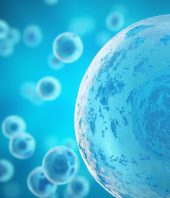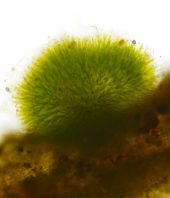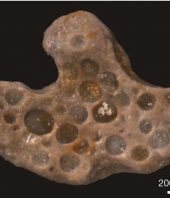The origins of life remains one of the greatest mysteries of science. But to simulate the primordial past—and the conditions that could have given rise to the spark of life—some scientists are turning to a technology usually associated with the car of the future: fuel cells.
Their usefulness lies in their very basic similarity to biological cells: life forms need to store and use energy with chemical reactions that transfer electrons from one molecule to another. So in order for non-living materials, say rocks or minerals, to come alive, they would need to be able to perform this electron dance.
A fuel cell fits this role nicely. Unlike a typical car engine, which combusts fuel like gasoline to convert the energy locked in chemical bonds into heat, a fuel cell takes fuel like hydrogen gas and oxygen and, with the help of electrodes and catalysts, produces electricity.
Elizabeth Howell, writing for Universe Today:
When thinking of a car, the research team says, they point out that fuel cells create electrical energy through the reaction of fuels and oxidants. This is called a “redox reaction”, which takes place when a molecule loses electrons and another molecule gains them.
So where could early Earth have provided such conditions—both the raw minerals and also the electrical energy? Many scientists suspect hydrothermal vents. Howell:
Hydrothermal vents are hot geysers on the sea floor that are often considered an interesting spot for life studies. They host “extremophiles”, or forms of life that exist (“thrive” is the better word) despite a harsh environment. The researchers say these vents are a sort of “environmental fuel cell” because electrical energy is generated from redox reactions between seawater oxidants and hydrothermal vents.
This means fuel cells could mimic the conditions of hydrothermal vents within the four walls of a laboratory rather than in the ocean deep. The trick is to swap the normal platinum catalysts used to speed up the chemical reactions with iron and nickel, metals that would have been commonplace on early Earth. The iron-nickel catalyst is then placed in a tank and used to separate two reservoirs of seawater, one very hot and alkaline (like inside a vent), the other acidic and cool (like the seawater surrounding the vent). If the fuel cell still generates a current, thenmaybe life could form under those conditions.
Et voila, some of the preliminary tests did generate electrical current. With more testing, they may be able to hone in on the chemistry that could have initiated primordial life and, eventually, all of us.
Source: NOVA
http://www.pbs.org/wgbh/nova/next/nature/fuel-cells-could-provide-clues-to-spark-of-life/






